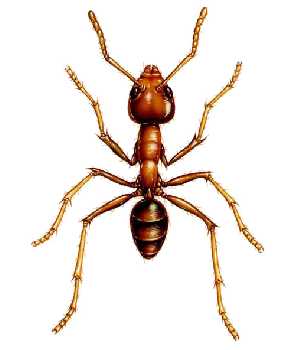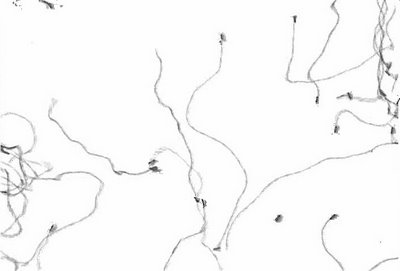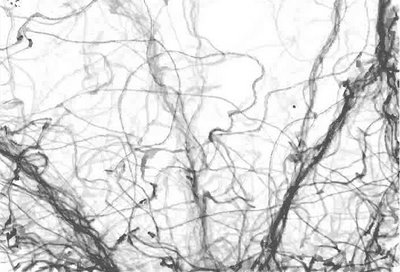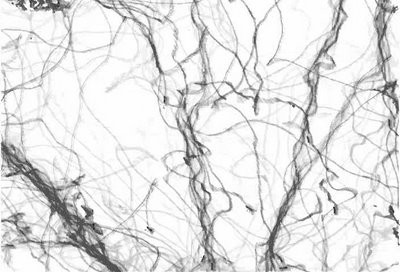Tracking Ants
Continuing our recent, if somewhat unexpected, ant theme, here is a project that maps the paths of walking ants.

The project, by Sean Dockray, consists of a short video loop that "documents a pheromonal portrait made by Argentine ants. While the ants in the video are real (they were shot in a single 45 minute long take) the trails are created in a piece of custom software, which tracks each ant frame-by-frame."



"The more that ants walk on a particular path, the darker that paths gets. Over time, the paths either disappear or are reinforced by more walking. In this way, the video is a kind of mutable, spatialized collective memory."
(See also Wormholes in Wood, and the almost unbelievable images of subterranean ant architecture at Nest-casting; and thanks to Sean Dockray for supplying the filmstills!).

The project, by Sean Dockray, consists of a short video loop that "documents a pheromonal portrait made by Argentine ants. While the ants in the video are real (they were shot in a single 45 minute long take) the trails are created in a piece of custom software, which tracks each ant frame-by-frame."



"The more that ants walk on a particular path, the darker that paths gets. Over time, the paths either disappear or are reinforced by more walking. In this way, the video is a kind of mutable, spatialized collective memory."
(See also Wormholes in Wood, and the almost unbelievable images of subterranean ant architecture at Nest-casting; and thanks to Sean Dockray for supplying the filmstills!).





Comments are moderated.
If it's not spam, it will appear here shortly!
Richard Feynman has a longish bit in one of his books ("Surely You're Joking, Mr. Feynman") about ant scent-following behavior. If I recall correctly, he had a minor ant infestation in his lab, and developed a theory of scent-following through his efforts in removing them (or rather, convincing the ants, through various strategies, to remove themselves).
However, it turned out to be quite a bit more complicated than he thought -- one problem was : if ants follow the "scent path" of other ants, how do they know which direction they're going along the path? In other words, what mechanism allows the ant to differentiate between "this way food" and "this way home," yet isn't muddied by all the ants that subsequently travel the path in both directions ... or is it necessary to differentiate at all? How can it appear that ants as an aggregate have a good sense of geometry, but ants in specific -don't-?
Thus do all great scientists amuse themselves. ;)
Here's a discussion of Feynman's problem and how he might have related it to the physics problems he was also mulling over : Link
Oh, and here's a nice article in Nature. New discoveries in ant chemistry and path-following may have resolved Feynman's question. Warning : PDF
For his Alcatraz project, Yukinori Yanagi tracked the movements of a single ant within a confined area:
http://www.artseensoho.com/Art/BLUM/yanagi97/yanagi1.html
Post a Comment